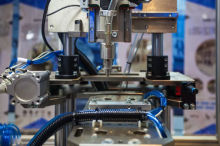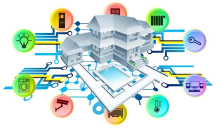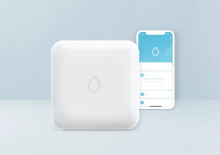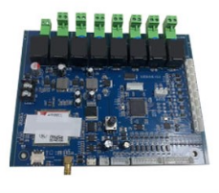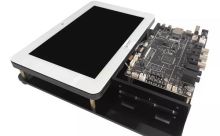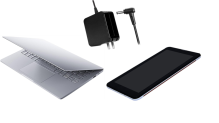Why use SBC for Iiot
For the Iiot designer, the significant advantage of the SBC is that the entire platform can be configured flexibly to select only the currently required features, while being scalable -- unlike some specially designed and built PCS, which require the entire platform to be scrapped. Another advantage is that by designing the system from scratch, the designer is able to accumulate a lot of knowledge that will be necessary in the future when computing resources need to be expanded.
As with the applications for which they are designed, SBC comes in many varieties. For example, the SBC commonly used in defense and aerospace systems comes in 3U and 6U sizes and is usually based on the Open VPX standard. The host processors often use high-end Intel processors, with Xilinx Virtex series FPgas or graphics processing units (Gpus) used as hardware accelerators, 12-bit and 16-bit analog-to-digital converters (ADCs) and digital-to-analog converters (Dacs), and large-capacity DDR4 memory. In addition, the backplane consists of multiple channels of fourth-generation PCIe and switching structures such as RapidIO and PCIe. Of course, these features don't come cheap.
On the other hand, DIY or "maker" SBC has been sold in the millions worldwide thanks to the ubiquity of Raspberry Pi, Arduino and other platforms. While much cheaper, these SBCS can also connect to a set of sensors, perform modest processing, and then send the results to a field or edge computer, which is based on one or more powerful SBCS. This obviously adds to the system's bill of material, but it makes sense because it increases the intelligence of the edge sensor device cluster, enabling edge computers to be used to make certain decisions both at the edge and locally.
Somewhere in between defense/aerospace applications and DIY is SBC designed for industrial applications. Raspberry Pi and Arduino may also be supported, but they must have excellent performance and durable environment features, so the host processor is either the Arm® Cortex® family or the mid-range Intel Core family. The SBC has a board size of less than 6 in.2, but its performance is comparable to that of a mid-range laptop, and it can be equipped with DDR3 or DDR4 memory or storage of the designer's choice.
Other standard features include support for SPI and SPX, Gigabit Ethernet, low voltage differential signals (LVDS) and PCIe, Trusted platform Module (TPM) and other types of security features, audio and video input and output, 8 to 12 USB ports, It also supports two - and four-channel SATA 3.0 storage. Typical accessories include various types of mounting hardware, coolers, and cables. Many SBCS also support daughter cards to extend communication standards not included on the mother board, and in a few cases support 4G cellular networks. In addition, the manufacturers of these SBCS provide extensive technical resources, such as development boards and prototype development kits.
A typical example of an Intel-based SBC is Advantech's AIMB-581WG2-00A1E (Figure 1). The 9.6 in.2 board uses Intel Xeon E3-1275 and Core I7-2600 processors and supports up to 32 GB of DDR3 memory. Another example is UDOO's SC40-2000-0000-C0-V, a 4.72 in.2 board based on AMD's quad-core 2 GHz Ryzen embedded V1605B CPU, Powered by AMD's 8-GPU Radeon Vega 8 graphics accelerator, it supports up to 32 GB of DDR4-2400 RAM and various large-capacity storage options.


